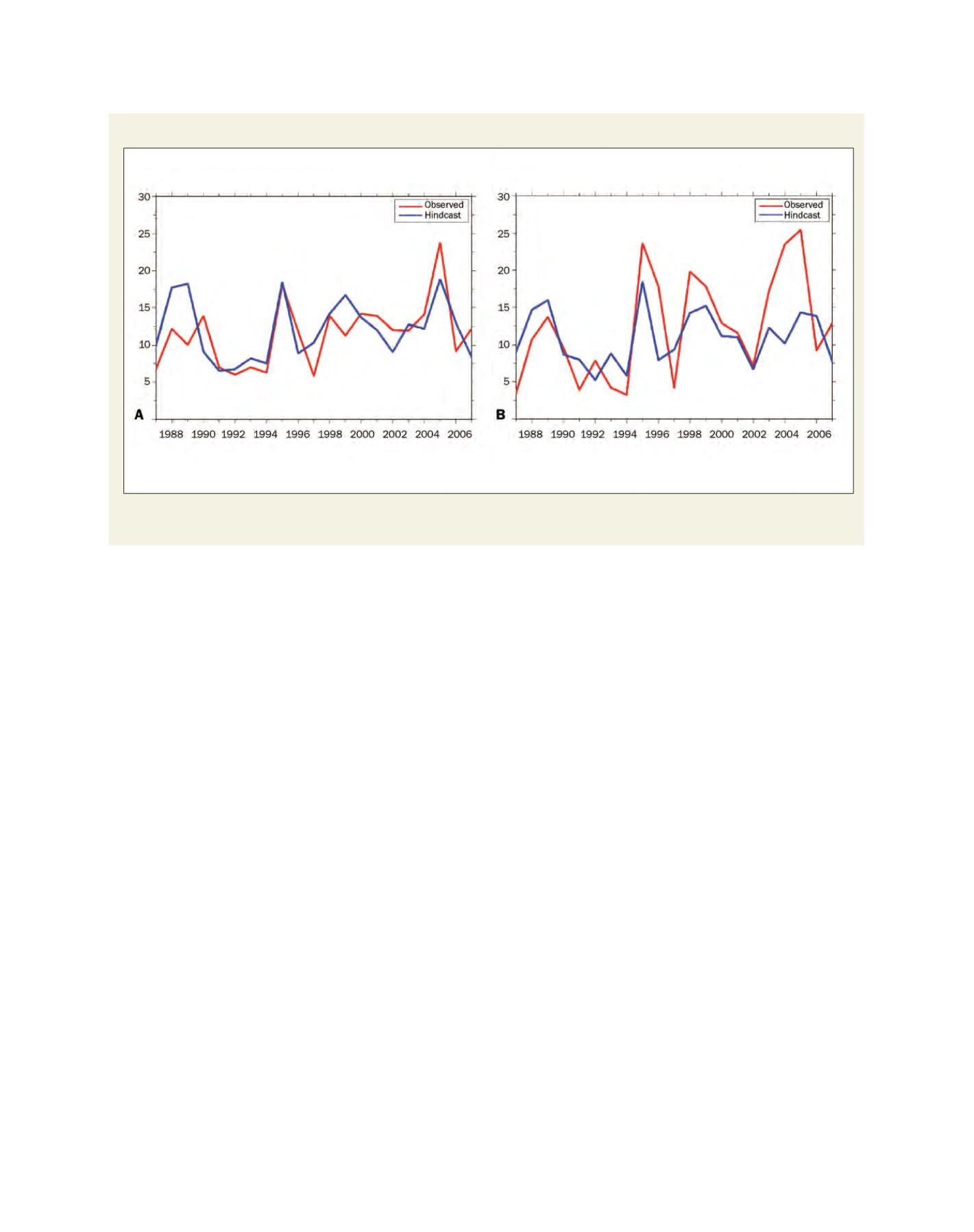

[
] 148
O
bserving
, P
redicting
and
P
rOjecting
c
limate
c
OnditiOns
highest and lowest malaria incidence. Multi-model output from these
centres has since been used as input to Malaria Outlook Forums in
Botswana.
Applications of decadal predictions are at a more experimental
stage than seasonal forecast applications. Using a decadal predic-
tion system (DePreSys) which includes present day observations,
the Met Office has developed updated long-term temperature
averages, used for planning in many sectors. Because of warming
trends, averages based on the standard period 1971-2000 are
more representative of the 1980s than of present-day climate. To
account for climate change, decadal predictions are used to extend
the observed historical temperature record into the future. The
long-term temperature averages for particular years are then calcu-
lated using a mix of observations and predictions. The method has
been tested for the UK, using hindcasts from the early 1980s, and
has been found to provide more accurate estimates than multi-
decadal climatologies based only on past observations.
Accessibility to seasonal forecast information for use by
Regional Climate Centres (RCCs), RCOFs and NMHSs has
improved considerably in recent years following WMO desig-
nation of 11 Global Producing Centres of long-range forecasts
(GPCs). In order to promote coordination in both forecast
and validation outputs GPCs must adhere to minimum criteria
for products. Additional long-range forecast products are also
available from other centres, currently not designated as WMO
GPCs. A significant boost to international cooperation occurred
in 2009 with WMO designation of a Lead Centre for Long-range
Forecast Multi-Model Ensembles, jointly hosted by the Korean
Meteorological Agency and the NOAA National Centres for
Environmental Prediction. The centre has a range of functions,
with two central themes:
• To provide a single portal from which users (RCCs,
RCOFs, NMSs and GPCs) can access GPC forecast
output in common formats
• To promote research and generate multi-model
products from the GPC forecasts.
The Met Office continues to work towards improving
dynamical prediction models, including their resolution
and initialization, to produce more accurate simula-
tions of climate variability and improve forecasts.
There remain many processes, with global teleconnec-
tions, which are currently poorly modelled, yet offer
great potential for improving seasonal to decadal fore-
casts. This suggests a permanent role for semi-empirical
forecast methods as a benchmark in development of
seasonal to decadal forecasts, as these methods can
sometimes represent a sizeable portion of regional
climate variability with just a few predictable factors.
Even with model development and improved initial-
ization, seasonal to decadal forecasts will always be
subject to uncertainties. Forecasts need to include likely
ranges of uncertainty and this represents a barrier to
many users, including the public. Another barrier to
wider use is in transforming the forecast output into
user-relevant quantities. There is a great need to couple
with more application-based models to represent
downstream impacts such as health, crops and water
availability. The climate prediction community needs to
face up to the challenge of simplifying the format and
language of forecasts, and working with a broad range
of users to tailor forecasts to their needs.
Verification of predictions for tropical storm numbers and ACE in the North Atlantic
Ensemble-mean hindcasts (blue) from June and observations (red) of A) tropical storm numbers and B) ACE index (divided by 10) for July-November periods,
1987-2007. In both cases, the correlation of hindcasts and observations is ~0.6; observations from HURDAT (Jarvinen et al. 1984)
Source: Met Office Hadley Centre
















